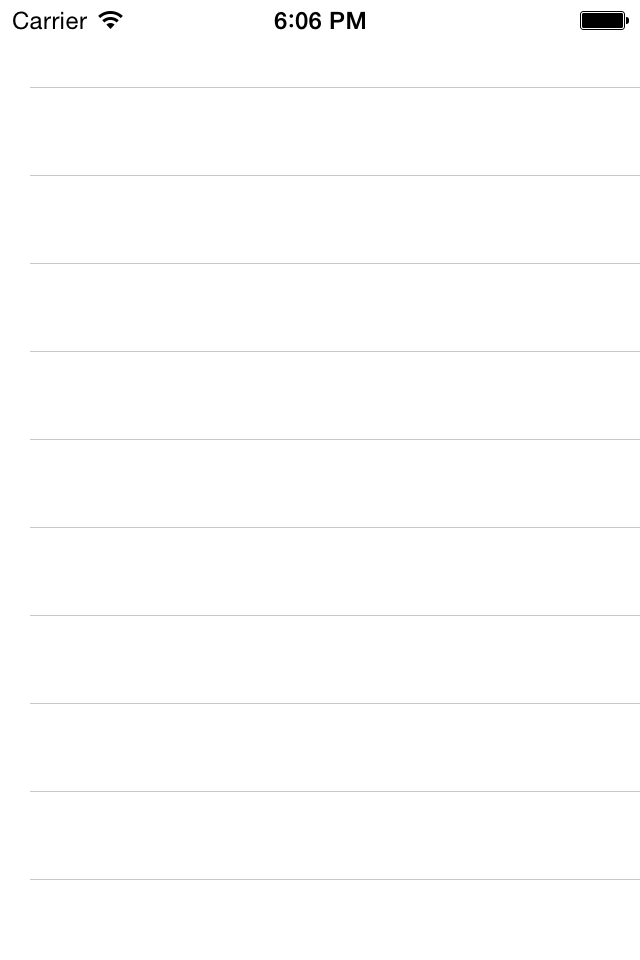创建一个简单的tableView:
1 #import <UIKit/UIKit.h> 2 3 /*tableView 一定要遵守这两个协议: UITableViewDataSource,UITableViewDelegate */ 4 5 @interface ViewController :UIViewController <UITableViewDataSource,UITableViewDelegate> 6 { 7 UITableView *_tableView; 8 } 9 @property (strong,nonatomic)UITableView *tableView; 10 11 @end 12 13 14 15 #import "ViewController.h" 16 17 @interfaceViewController () 18 19 @end 20 21 22 23 @implementation ViewController 24 25 - (void)viewDidLoad 26 { 27 [superviewDidLoad]; 28 tableview = [[UITableViewalloc]initWithFrame:CGRectMake(0, 0,self.view.bounds.size.width,self.view.bounds.size.height) style:UITableViewStylePlain]; 29 30 31 // UITableViewStylePlain, 普通 32 // UITableViewStyleGrouped 分组 33 34 tableview.delegate = self; //设置代理/ 35 tableview.dataSource=self; 36 [self.viewaddSubview:tableview]; 37 38 } 39 40 /* 这个方法是显示tableView中有多少组,不实现该方法默认为1组*/ 41 -(NSInteger)numberOfSectionsInTableView:(UITableView*)tableView 42 { 43 return 1; 44 } 45 /* 该方法表示每组有多少cell*/ 46 -(NSInteger)tableView:(UITableView *)tableView numberOfRowsInSection:(NSInteger)section 47 { 48 return 10; 49 } 50 51 52 -(UITableViewCell *)tableView:(UITableView *)tableView cellForRowAtIndexPath:(NSIndexPath *)indexPath 53 { 54 55 //定义个静态字符串为了防止与其他类的tableivew重复 56 static NSString *CellIdentifier =@"Cell"; 57 //定义cell的复用性当处理大量数据时减少内存开销 58 UITableViewCell *cell = [tableview dequeueReusableCellWithIdentifier:CellIdentifier]; 59 60 if (cell ==nil) 61 { 62 cell = [[UITableViewCellalloc]initWithStyle:UITableViewCellStyleSubtitle reuseIdentifier:CellIdentifier]; 63 } 64 65 return cell; 66 } 67 68 @end
运行结果:
